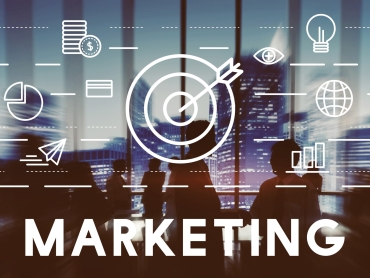In the digital age, the line between success and failure for a website often comes down to two simple factors: speed and performance. It doesn’t matter how beautiful your design is, how compelling your content looks, or how sophisticated your marketing campaigns are — if your site is slow or unresponsive, users won’t stay.
In 2025, as online competition grows fiercer, and mobile-first browsing dominates, speed and performance are no longer optional extras — they are mandatory foundations of modern web design.
This in-depth guide covers everything you need to know about website speed and performance, including:
The difference between speed and performance (and why both matter).
Why speed and performance directly affect user experience, SEO, and conversions.
Design and technical factors that impact site performance.
Quick wins to optimize your site speed in 2025.
Advanced optimization strategies for developers and web designers.
The future of website performance and where it’s headed.
By the end, you’ll have a comprehensive action plan for building websites that load faster, run smoother, and keep users engaged longer.
What Do We Mean by Speed and Performance?
Before diving into strategies, let’s clarify the difference:
Website Speed
Website speed refers to how quickly a page fully loads and allows users to interact. It includes:
Time to First Byte (TTFB): How quickly your server responds to the request.
First Contentful Paint (FCP): How fast the first visible element loads.
Largest Contentful Paint (LCP): How fast the main content (like hero images or text) loads.
Time to Interactive (TTI): When the site becomes usable for the visitor.
Website Performance
Performance is broader and refers to how well the website runs under different conditions, including:
Responsiveness: How smooth navigation feels.
Scalability: How the site handles heavy traffic.
Efficiency: How quickly animations, forms, and scripts execute.
Stability: How consistently the site works across devices and browsers.
In short:
Speed = how fast it loads.
Performance = how well it runs.
A high-performing website isn’t just fast — it’s reliable, responsive, and resilient.
Why Website Speed and Performance Matter
1. User Experience Is King
Modern users expect instant results. Studies show that if a page takes more than 3 seconds to load, over 50% of visitors abandon it.
A fast site = happy users who stay longer.
A slow site = frustrated users who bounce to competitors.
In a world of short attention spans, speed is the first impression your site makes.
2. SEO Ranking Factor
Google has made speed a core ranking factor with metrics like Core Web Vitals (LCP, FID, CLS). This means:
Faster sites rank higher.
Slower sites lose visibility, traffic, and ultimately revenue.
Speed is not just about users — it’s about search engine trust.
3. Mobile Users Demand It
Over 65% of web traffic comes from mobile devices. Mobile users face varying internet speeds, meaning:
Your site must adapt to slow networks.
Performance should be optimized for mobile-first browsing.
If your site fails on mobile, you’re failing the majority of your audience.
4. Conversion Rates Depend on It
Speed has a direct impact on conversions. Consider this:
A 1-second delay in load time = 7% loss in conversions.
Amazon calculated that 100ms of latency costs them 1% in sales.
Google found that reducing page load times by half can increase conversions by 15-20%.
In other words, a slow site doesn’t just hurt traffic — it loses you money.
5. Competitive Advantage
In crowded markets, speed becomes a differentiator. If two sites offer the same product, the faster site wins trust and sales.
Performance is not just technical — it’s a brand reputation factor.
Design Decisions That Impact Speed and Performance
Your design choices directly influence how fast and smooth your site feels. Here’s a breakdown:
| Design Element | Impact on Speed & Performance | Best Practice Tips |
|---|---|---|
| Image Use | Large, unoptimized images slow load times | Compress images, use WebP/AVIF, enable lazy loading |
| Fonts & Typography | Exotic fonts increase render time | Limit font families, preload key fonts |
| Animations & Effects | Heavy animations can lag devices | Use lightweight, hardware-accelerated animations |
| Code Bloat | Excess CSS/JS slows rendering | Minify, combine, and defer non-critical scripts |
| Third-Party Plugins | Add latency, sometimes conflict | Limit plugins, audit regularly |
| Responsive Design | Ensures smooth performance on all devices | Use fluid grids, media queries, adaptive images |
The lesson: design is not just about looks — it’s about speed and usability too.
Quick Wins to Boost Speed in 2025
If you want to see results fast, start with these low-effort, high-impact optimizations:
Optimize and Lazy Load Images
Convert to modern formats (WebP, AVIF).
Use responsive images for different device sizes.
Enable lazy loading for below-the-fold visuals.
Minimize and Defer JavaScript
Remove unused scripts.
Defer non-critical JS to load after content.
Use a CDN (Content Delivery Network)
Deliver content from servers closest to users.
Reduce latency globally.
Choose Lightweight Frameworks
Avoid bloated libraries.
Use minimalistic design systems for faster rendering.
Enable Browser Caching
Store static resources in the browser.
Ensure repeat visitors enjoy faster loads.
Test and Monitor Regularly
Tools like Google PageSpeed Insights, Lighthouse, and GTMetrix highlight performance issues.
Continuous monitoring ensures consistent speed.
Advanced Performance Optimization Strategies
For developers and technical teams, here are deeper optimization tactics:
Server-Side Improvements: Use faster hosting, enable HTTP/3, and leverage caching layers.
Database Optimization: Index queries, remove clutter, and use caching.
Critical CSS: Deliver above-the-fold CSS inline for faster first paints.
Prefetching & Preloading: Anticipate what users will need next.
Lazy Load Scripts: Delay analytics, chatbots, or ad scripts until interaction.
Edge Computing: Process requests closer to users for lower latency.
Real-World Case Study
A large e-commerce retailer redesigned their site focusing on performance-first design:
Reduced average image size by 60% using WebP.
Minified all JavaScript and deferred non-essential scripts.
Implemented CDN delivery.
Regularly monitored Core Web Vitals.
Results after 3 months:
40% faster load times.
25% increase in conversions.
30% decrease in bounce rate.
Performance was not just a technical win — it became a revenue driver.
The Future of Website Speed and Performance
Looking ahead, several trends will shape how we think about performance:
AI-Powered Performance Monitoring – AI will automatically detect and fix bottlenecks.
Edge Networks & 5G – Faster, distributed infrastructures will reduce latency further.
Progressive Web Apps (PWAs) – Delivering app-like speed directly through the browser.
Serverless Architectures – Scaling instantly with demand to handle heavy traffic.
Green Performance Optimization – Focus on energy-efficient, sustainable design for eco-conscious brands.
The websites of tomorrow will be instant, intelligent, and invisible in friction.
Final Thoughts
In 2025, speed and performance define online success. A beautiful design that loads slowly is no longer acceptable. Users, search engines, and competitors all reward websites that prioritize performance.
By focusing on:
Fast load times (speed), and
Smooth, reliable usability (performance),
you create websites that delight users, rank higher on Google, and drive better business results.
Remember: every millisecond counts. Invest in performance today, and you’ll build a digital presence that is not just attractive but unbeatable.








